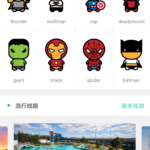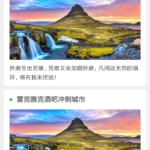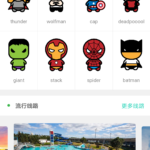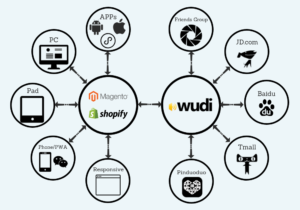1. Overpriced products or targeting the wrong consumer group.
After all, China is a developing country, Chinese consumers want good value for their money. Although there are some very wealthy Chinese consumers, most E-commerce sales are to the middle-class. China does not escape the rule. As it is in Western countries, bad pricing is a recipe for disaster.
2. Learning from the brands that tried entering the Chinese market
I know you did your research, most of the western brands are selling expensive products in China, they want to maximize their profits on each order (because the traffic is huge, but the conversion rate is low). And this has nothing to do with their products, but their strategy is offline first.
Now we are talking about e-commerce first, right? The logic has changed, you want to decrease your profits on each order but increase the sales volume.
3. Thinking Chinses customers are willing to pay more for your design or style
Good design is perfect, but the design should be the reason why Chinese customers choose you, not pay more for your products.
I have seen so many new E-commerce players make this mistake. They put an unbelievably high price tag a product, claiming it is a designer product that deserves high-margins. For E-commerce this is dangerous.
I just used three paragraphs to tell you that you are too expensive? Yes. I want to say it again, your beautiful logo, long history, amazing design are the reasons why people choose you, not why they pay more.
4. Oversized.
If you are selling clothing or shoes, you need to adapt the sizing of your products to the Chinese market. You might even need more sizes, look at Yaoming and Jack Ma.
5. Chinese consumers like very thorough and comprehensive product descriptions
I raised this point in another article. I have found that a lot of brands put so much budget in marketing, hire expensive models, take very fancy photographs and videos, but the products descriptions are just too simple.
To put it simply, if you wrote a whole novel for each product, it would sound reasonable to me.
Chinese is a highly abstract language, even if your description looks long in English, it is not the case in Chinese.
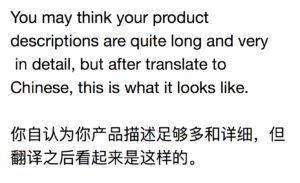
If your description is too simple or too short, shoppers won’t stay a long time on your listing, and human need time to make decisions. A description that is too short or too simple will affect your conversion rates.
But do not worry, our translate system will add many extra descriptions for each of your products before we sync them to all the platforms.
6. No aftersale
When purchasing a product from a foreign brand, more than half of Chinese consumers worry about the aftersale. You need to tell them that you handle the return, exchange, and refund. This is why we offer an aftersale service. Generally, if the price is ok, Chinese will still prefer a good foreign brand, but you need to show us that you have faith in your products.
7. No Chinese model
You need a Chinese model. Especially for the young generation of Chinese, they prefer Chinese models. A familiar face is more reassuring and we can easily imagine ourselves wearing your product. Additionally, we are not going to think that you are a fake foreign brand just because you are using Chinese models.
8. No Chinese name for your brand
A well picked Chinese name for your company is extremely important. You don’t have to put it on your label, but you need to mention it during the marketing campaigns. We don’t really remember English names so much. We are very superstitious, so choosing a proper name with positive Chinese characters is very delicate (you will need help from a Chinese person for this).
9. Learning from other Chinese sellers.
Some foreign brands enter the Chinese market and try and copy a competitor in China. For example, by doing promotions too often, offering discounts that are too high, or do something unrelated to their brand, such as lottery, group buying etc. Those kinds of marketing techniques may work for Chinese brands, but maybe not for you. Don’t forget you are a foreign brand, you should play your own style and use your own strengths.
Bonus:
10. Quality
Eventually, we prefer foreign brands because we want better quality. Since so many local Chinese brands have disappointed us again and again, we rely on foreign brands as a guarantee for good quality.
11. Hiring a foreign-owned Agency in China.
I’m Chinese born and raised. I started to sell products on Taobao when I was in college. Do you really think the foreign-owned agencies can help you in China? Do they really know what the Chinese customers want?
I am not surprised to see quite a lot of foreign brands join Tmall, JD and then fail. They all share a common trait, they hired a foreign-owned agency.
Summary
E-commerce is the art of to click or not to click. Every single detail, factor, weakness will cause you to fail in such a competitive market and kick you. As a foreign brand, you have your advantages. Use them and avoid the mistakes, respect the habit of Chinese consumers and doing things right will put you on the road to success
About the writer:
Nathan is Co-Founder of Wudi technologies, he possesses 9 years of experience on E-commerce.

